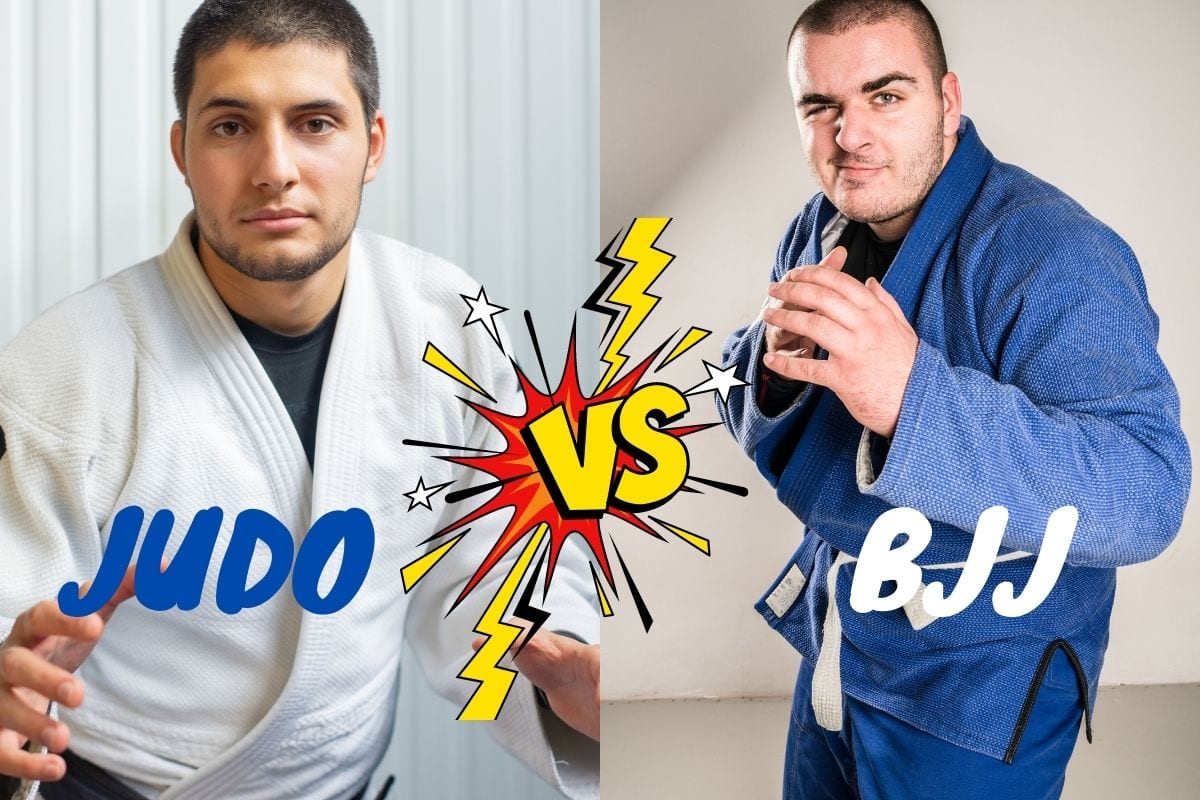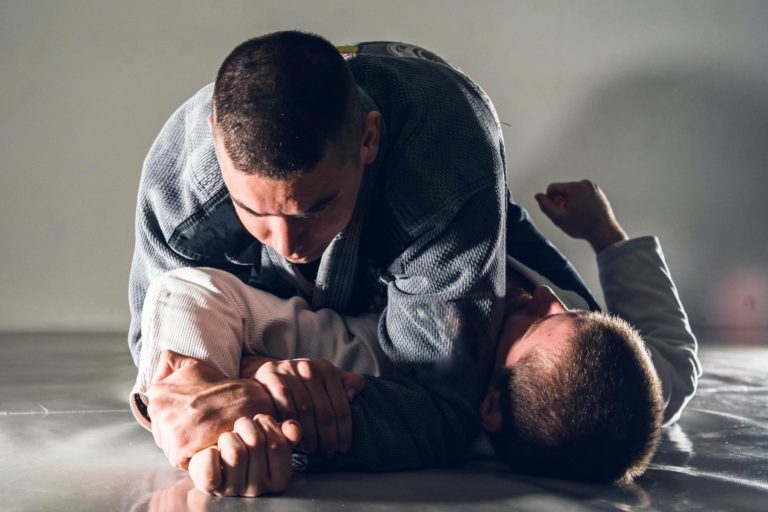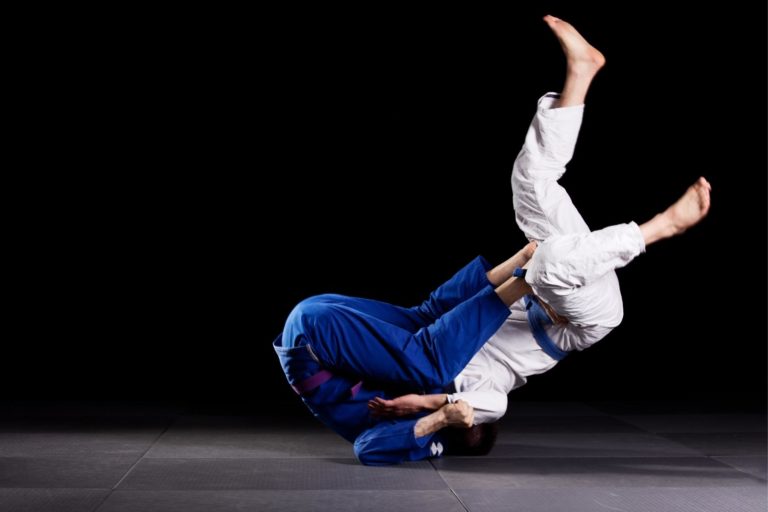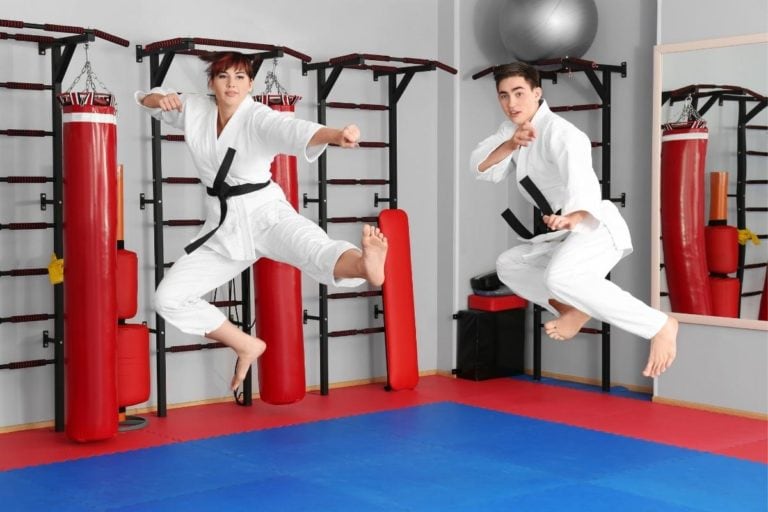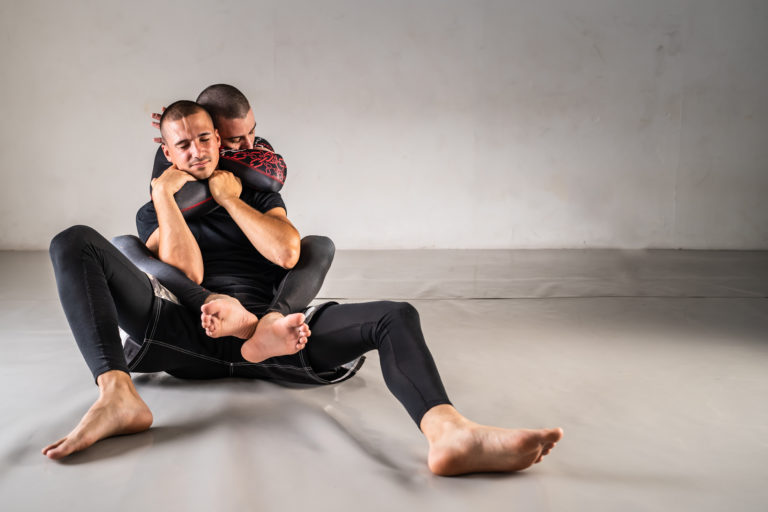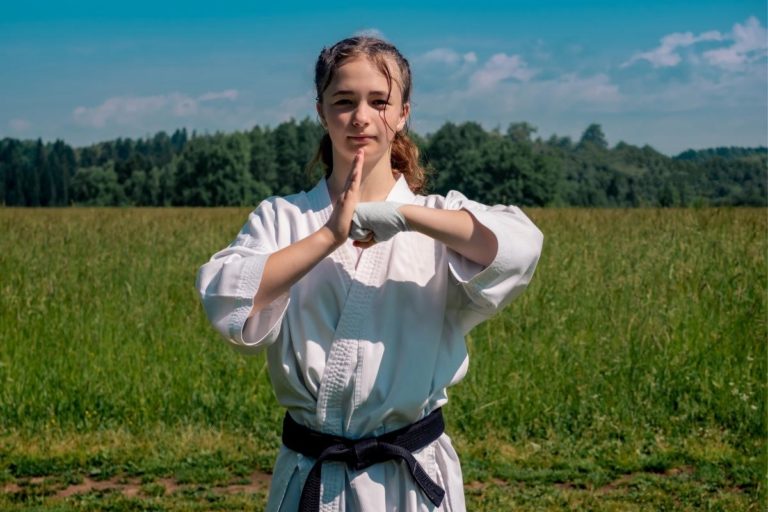Judo vs BJJ
It is often the case that people compare martial arts to see which one is better than the other. Therefore, BJJ and judo are most commonly compared since both are practiced in the gi, involve takedowns and groundwork. Taking this into accoount, one still might ask which is better.
Even though they are very similar, they encompass distinguishable differences. Judo focuses on throwing, but has less groundwork, while BJJ is mostly concerned with fighting on the ground with takedowns being less frequent. Aside from that, they utilize different belt systems and different competition rules.
Considering their apparent resemblance, the two martial arts are vastly different from a physical and philosophical standpoint. Therefore, which sport is better? Stick around until the end of this article to learn about both martial arts and decide which is better for you.
Judo vs BJJ – Comparison
The fundamental reason Judo and BJJ appear to be the same is that they share progenitors; both stem from the same source and are inextricably linked. The following factors can help you understand the difference between the two:
Techniques
Judokas base their game on throwing their opponent in the most efficient manner. They receive points based on how their opponent hits the ground. Some arm bar maneuvers and arm locks are part of conventional Judo training and point scoring, in addition to takedown skills.
Some arm bar maneuvers and arm locks are part of conventional Judo training and point scoring, in addition to takedown skills. BJJ is primarily concerned with grappling, with the primary goal of forcing opponents to submit rather than scoring points.
BJJ does not have a lot of restrictions as opposed to Judo. Many techniques performed in BJJ would be considered illegal in Judo, such as grabbing your opponent’s wrist, breaking a grip with two hands, or performing a wrist lock.
Practitioners of BJJ are free to use Judo techniques. Any Judo throw that results in a dominant position is scored. Passing the guard, rear mount and back mount mount, on the other hand, are all worth more than takedowns.
Competitions
In order to distinguish them even better, we will observe an important factor, the rules. In a BJJ match, the primary aim is to submit the opponent. First of all, it should be mentioned that Judo matches do not have time limits, while BJJ matches range from 5 to 15 minutes and submission only matches.
When you receive one complete point, ‘ippon,’ in Judo, you win the match. Throwing your opponent on his back, submitting him with a choke or arm-lock, or pinning him down for 20 seconds results as a win.
‘Waza-ari’ refers to half points. Throwing your opponent partially on his back or pinning him down for longer than 10 seconds count as one half point. The match can be won by obtaining two of those.
Winning a BJJ bout comes in the form of points or a submission. You can earn as many points as you can by gaining dominant positions, sweeps and takedowns. These are all ground-based positions apart from takedowns.
As a result, BJJ practitioners will take the battle to the ground immediately, opposite to Judo practitioners who prefer to stay on their feet. The Judo scoring system pushes practitioners to battle on their feet in order to throw and defeat their opponent.
Gi & No Gi
BJJ can be practiced without the Gi in a No Gi variation that involves the use of a rashguard and shorts, whilst Judo is practiced solely in the Gi since Judo techniques rely heavily on the grips that the Gi offers. In Judo practice or competition, this type of fundamental alteration in technique is not seen.
The No Gi version of BJJ entails practitioners to rely on natural holds, they need to control their opponent through holding the ankles, head, neck and wrists. The no-gi system causes a dramatic alteration in how BJJ players interact with their opponents.
Gi Differences
Although the standard BJJ and Judo Gis may appear to be identical, there are several differences. Because it is designed to withstand gripping and throwing, the standard Judo Gi is thicker and more robust than a conventional karate Gi.
Because it must withstand considerably more harm, the standard BJJ Gi is more resilient than a Judo kimono. Rip-stop stitching reinforces the fabric. There are also lightweight BJJ Gis to choose from in order to make weight more easier on fight day.
Moreover, there are more gi colors to pick from in BJJ. Tournaments governed by the International Brazilian Jiu Jitsu Federation (IBJJF) and many other governing bodies allow blue, black, or white Gis. On the contrary, only white Gis are permitted in Judo.
Belt Systems
The BJJ belt system system is similar to the Judo belt system, it is just a more simple version of it. The five belts in BJJ are: white, blue, purple, brown and black. Judo on the other hand has slightly more belts: white, yellow, orange, green, blue, brown and black.
Each belt has a minimum age requirement; for example, the rank of white belt requires no age, whilst a blue or purple belt has a minimum age requirement of 16. Each belt must be worn for a certain amount of time before moving on to the next.
In Judo, there are no ‘stripes’ between belts, whereas each BJJ belt requires four ‘stripes.’ In BJJ, this means that progressing to the next belt takes longer. Receiving a black belt in BJJ takes about 10 years on average, while attaining a black belt in Judo takes 5-6 years.
Which One is Better for Self-Defense?
Since Judo and BJJ share many similar aspects, they are both efficient. BJJ offers a bigger range of techniques for fighting on the ground, but Judo offers a greater skill set for fighting while standing. However, since most fights end up on the ground, BJJ might be better for self-defense.
Should the fight be taken to the ground, the BJJ practitioner can utilize his acquired skills and successfully defend against a larger attacker. On the other hand, Judo can be utilized effectively to slam the attacker against the ground and knock him out.
Another factor to bear in mind should be that Judo techniques are made to be implemented with a Gi. Some attackers may wear clothing that can be grabbed, however this is not always the case. As a result, some takedowns may be unsuccessful in a real-life self-defense scenario.
Whice One is Better for MMA?
This is a difficult question to respond to. Nearly every single MMA fighter has a basic understanding of BJJ. Moreover, it should be noted that BJJ for MMA is nearly a sport of its own by now. MMA fighters that lack BJJ skills usually employ wrestling as an alternative.
It is uncommon to see a pro MMA fighter that exclusively practices Judo and some form of striking and that does not have any knowledge of fighting on the ground.With this in mind, MMA athletes who come from Judo background, on the other hand, generally perform exceptionally well.
For example, Judo in MMA is synonymous with Ronda Rousey. She was the most well-known and accomplished UFC fighter with a Judo background. Before switching to MMA, Rousey was an Olympic gold medalist in Judo.
During her reign of terror, Rousey utilized her Judo abilities to throw her opponents in a severe fashion, from there, she frequently ended her fights by using her signature armbar.
Which One is More Popular?
Due to its increased exposure, BJJ is undoubtedly more famous than Judo. This is mostly because of its adaptability in MMA. Because many great athletes in MMA practice BJJ, it attracts more social media attention than Judo.
Due to its increased exposure, BJJ is undoubtedly more famous than Judo. This is mostly because of its adaptability in MMA. Because many great athletes in MMA practice BJJ, it attracts more social media attention than Judo.
When the UFC first began, Royce Gracie also presented BJJ to the entire world whilst Judo, was exclusively passed down through Judo experts who traveled from place to place. Despite the fact that this helped popularize Judo, it did not receive the attention that BJJ received.
There are also a multitude of other ways to learn BJJ. If you cannot find a place to train BJJ, there are a lot of online teaching videos and literature that make it more widely available. YouTube videos are excellent sources of information as well.
Conclusion
Finally, both of these elite martial arts are fantastic sports that should not be overlooked. As we have observed, BJJ and Judo have a great deal in common due to their common ancestors.
Understanding the contrasts between these two martial arts is important, particularly if you want to reap the benefits of training both of them. It is strongly advised that people try out both of them and establish their own opinion, while also benefiting from both wonderful martial arts.

